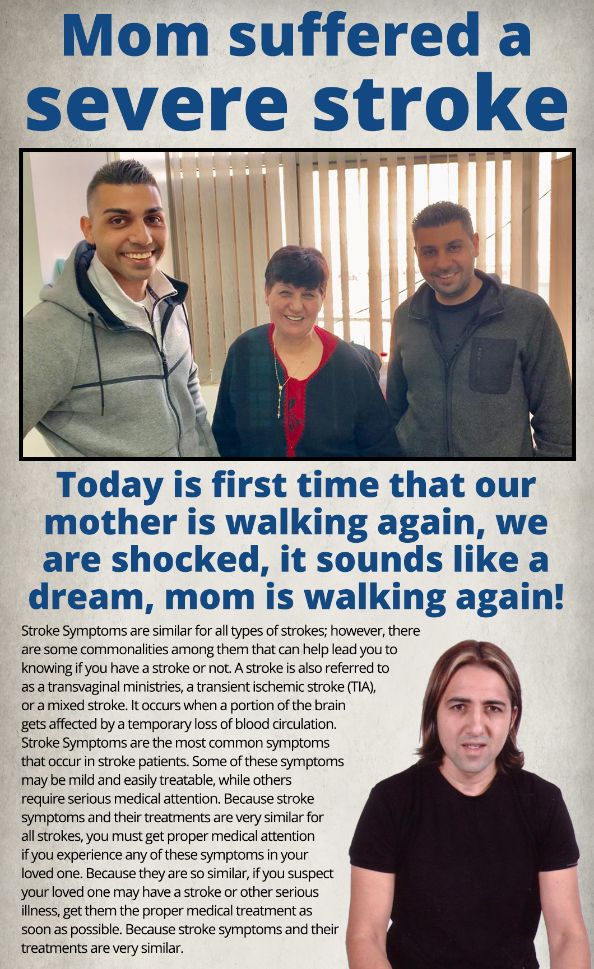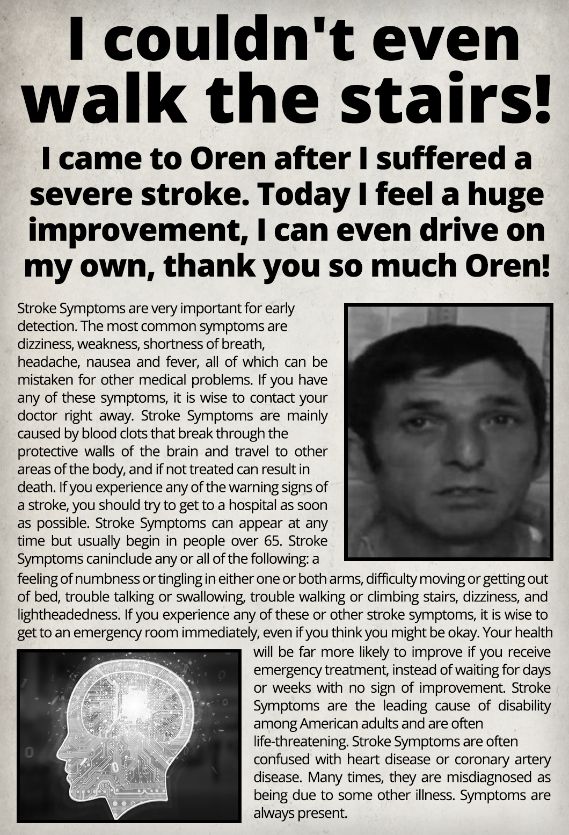The third category is a hemorrhagic stroke, Oren Zarif
- Oren Zarif

- Aug 1, 2021
- 3 min read
Updated: Sep 24, 2021
2Types of Stroke - Understanding the Types of Strokes
Are you suffering from any medical problem? Is your body struggling to recover? It is a sign that the energetic fields in your body are blocked.
The Bosmat formula helps suffering patients worldwide, with an external treatment.Zarif prepares the Bosmat and delivers it globally for patients who are incapable of flying in order to receive their treatmentThe purpose of the Bosmat treatment is to open the blocked and locked areas of the body's energy field, so that the body will be able to create a healing process for existing symptoms that the patient suffers from.For years, Oren Zarif proved that as the energy blocks open,

the body begins to create a healing process and returns to its strength, thousands of patients testify for it.Therefore, it is important to open the body's blocked energy field channels.Only then can the body cope with the existing problems and create a self healing process.
Strokes affect people in many different ways, and none of them are the same for every patient. The five categories of stroke are medical accidents that either stop or disrupt the normal flow of blood to the head. These categories are:
Facial droop: One side of your face is droopy or even completely numb. Arm weakness: One arm is usually weak or numb, usually the forearm. Speech difficulty: Speak is usually slurred or even monotone. Time for 911: If you have any of the above signs, especially if they become worse, call 911 immediately and go to a hospital. Most people recover with a few weeks or months, but it is not uncommon for severe strokes to lead to death. Stroke rehabilitation can help, but sometimes, even after rehabilitation, the symptoms won't go away on their own.
Some risk factors for this condition are genetics and the severity of the symptoms. Risk factors include hypertension and poor nutrition. Hypertension increases the risk for developing or worsening strokes in adults. Poor nutrition can make the condition even worse, causing the risk for more severe disability. A diet low in potassium and magnesium makes hypertension and other medical problems worse, especially in older adults and people who already have kidney disease or other health issues.
The third category is a hemorrhagic stroke, which is caused by the accumulation of too much blood clots in the arteries. The result is either reduced blood flow to the head (ischemic) or an ischemic stroke. Both require emergency treatment because hemorrhagic stroke often causes death. Blood clots often cause a combination of circulatory, neurological, or vascular symptoms, which can be dangerous if not treated promptly.
When looking at the three main types of stroke, it is important to remember that not all strokes are believed to be the same. They are classified based on the mechanism of action, or cause, instead of the location or result of the attack. There are four main categories. The first is the ischemic stroke, which results from a blood clot in the arteries. The second is the hemorrhagic stroke, which is caused by a break in the walls of a hemorrhagic vein, while the third is the paraganglular or catalepsy stroke, which is caused by a disturbance in brain activity.
The most common symptom of this is the inability to regulate brain activity as a result of loss of consciousness, which can eventually cause changes in behavior and cause seizures. There are also other risk factors such as increased blood pressure, high cholesterol, smoking and obesity. These factors contribute to the risk of developing this disorder. People who have hypertension, have high cholesterol levels, or diabetes are much more likely to suffer from this disorder than normal individuals.
One of the rarest and potentially fatal types of stroke is the congenital aneurysm. Congenital aneurysm occurs in the lining of one of the blood vessels in the brain and can only be diagnosed through a high quality ultrasound. This type of stroke can occur at any age but is most common in children. However, aneurysms can also occur in pregnant women.
Of the four main types of ischemic strokes, the most common cause is a hemorrhage in the brain, which may also cause aneurysms or cerebral palsy. Other symptoms include weakness, dizziness, fainting, sweating, seizures and ringing in the ears. While some symptoms may occur only on one side of the body, others may occur on both sides of the body simultaneously. Symptoms that cannot be ignored should be immediately reported to the doctor. Stroke is one of the leading causes of disability among American adults.
.png)




































































































Comments